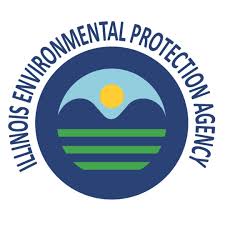By Thomas Best
During the month of May, my wife, Pam, and I enjoyed another one of our trips across the United States. Our latest journey was along the famed “Route 66.” You know, the place where you get your kicks. Over these next weeks, I will share tales from this celebrated ribbon of asphalt and concrete stretching from Chicago to Los Angeles. I hope you will learn more history and enjoy some entertaining stories of what is often referred to as the “Mother Road.”
First, you should understand that this route wasn’t just be born in the 1920s. While 1926—two years from now—will mark the centennial of this iconic roadway, this cross country route across the Midwest and Southwest is very old. Sections of this eventual 2,400 mile highway running across Illinois, Missouri, Kansas, Oklahoma, New Mexico, Arizona, and California existed prior to a national highway. Dating back thousands of years, Native Americans created trails in these regions for hunting and trading. Early Spanish traders, priests, military, and governmental authorities next traveled these trails. By the late 19th century, after being first surveyed as a region before the Civil War by the U.S. military, American freight companies and stage coaches—and then the railroads—established their roads for many purposes. Finally, with the invention of the automobile and a rising middle class, the first “tourists” took their chances traversing these same primitive roads. In fact, one plan was to have this highway stretch from Washington D.C. to San Diego. By the early 20th century, in areas where paved roads already existed (such as with state highway 4 running across central Illinois), transportation planners simply renamed existing sections of paved highway (and by the way, portions of Route 66 were originally called “Route 60”). Finally, in 1921, the Federal Highway Aid Act (soon updated in 1925) created the plan that would become Route 66. And note: this was at a time when just 10% of all rural roads were paved (in fact, the earliest paths of Route 66 had just 800 miles of pavement).
The two men who deserve the most credit for creating the motivation and construction of Route 66 are well known to historians of this now nostalgic highway. First, there was Cyrus Avery, a businessman from Tulsa, Oklahoma. Now championed as the “Father of Route 66,” he was certainly a proponent of such a highway carrying both commerce and travelers to the west coast. However, it is also fair to say that John Woodruff, of Springfield, Missouri, who worked with Avery, was another instrumental proponent for what became known as “America’s Main Street.” Their dream was to create a route linking both small towns and large cities which would benefit their local economies. By the time the initial sections of the route were laid out (but not all paved yet), new gas stations, motels and hotels, restaurants, and shops were springing up between Chicago and Los Angeles.
So, you see, the history of “Route 66” is very much an evolutionary one. It has further developed, faded, and then become recreated. For example, today you can still drive 85% of Route 66 where the highway has been preserved. The longest continuous stretch of over 100 miles is found in California.
Next week, I will began describing something of each of the states which are fortunate to connection to this iconic ribbon of highway.













